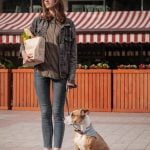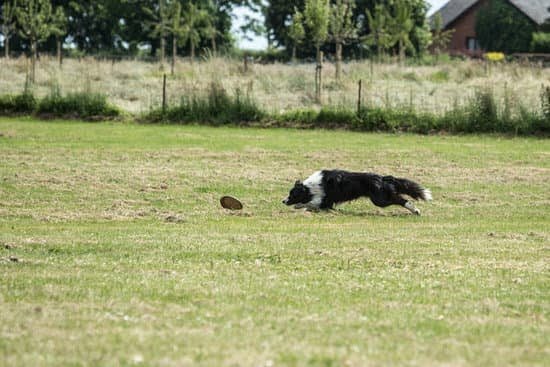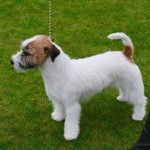Are you wondering how to train a dog not to growl when eating? It can be concerning and challenging to deal with a dog that exhibits aggressive behavior during feeding time. Understanding the root of the problem is crucial in addressing and modifying this behavior. This article will provide valuable insights and practical tips on how to help your dog overcome growling while eating through positive reinforcement, gradual desensitization, and basic obedience training.
Dogs may growl when eating for various reasons, such as food guarding, fear, or discomfort. It is essential to recognize the underlying cause of this behavior in order to effectively address it. By understanding the root of the problem, pet owners can implement appropriate strategies to create a peaceful feeding environment and foster a harmonious relationship with their furry companions.
Establishing a peaceful feeding environment is key in preventing growling during meal times. This involves setting up the right space for feeding and creating a routine that promotes relaxation and security for your dog.
Moreover, implementing positive reinforcement techniques and gradual desensitization can help modify your dog’s behavior and teach them to associate meal times with positive experiences. Through consistency and patience, you can train your dog not to growl when eating and ensure long-term management of this behavior.
Establishing a Peaceful Feeding Environment
Choosing the Right Feeding Area
When it comes to training a dog not to growl when eating, it’s important to start by setting up the right feeding space. Choose a quiet area where your dog can eat without feeling threatened or disrupted. This could be a corner in the kitchen, a designated feeding spot in the living room, or any other place where your dog feels comfortable and safe.
Avoiding Potential Triggers
Another aspect of establishing a peaceful feeding environment is to minimize potential triggers that may cause your dog to feel anxious or defensive during meal times. For example, if you have multiple dogs, consider feeding them separately to avoid competition and reduce the chances of growling behavior. Additionally, ensure that there are no loud noises or disturbances around the feeding area.
Creating a Routine
Dogs thrive on routine and predictability, so creating a consistent feeding schedule can also contribute to a peaceful feeding environment. Try to feed your dog at the same times each day and avoid sudden changes in their meal schedule. This helps to create a sense of security and stability for your dog, ultimately reducing their likelihood of growling while eating.
By setting up the right space for your dog’s meals, avoiding potential triggers, and establishing a consistent routine, you can create a peaceful feeding environment that promotes calm and relaxation during meal times – ultimately helping to train your dog not to growl when eating.
Implementing Positive Reinforcement Techniques
When it comes to training a dog not to growl when eating, positive reinforcement techniques can be highly effective. Reward-based training focuses on rewarding good behavior rather than punishing bad behavior. This approach can help create a positive association with meal times and reduce the likelihood of growling.
One effective method of reward-based training is using treats to reinforce good behavior during feeding time. For example, when your dog remains calm and does not growl while eating, immediately reward them with a small treat. Over time, this can help your dog understand that remaining calm during meals results in positive rewards.
Consistency is key when implementing positive reinforcement techniques. It’s important to consistently reward your dog for desired behaviors and refrain from inadvertently reinforcing negative behaviors. By being consistent in your approach, you can effectively train your dog not to growl when eating.
In addition to using treats as rewards, verbal praise and affection can also be effective forms of positive reinforcement. When your dog displays appropriate behavior during meal times, be sure to offer verbal praise and physical affection to further reinforce their good behavior.
| Positive Reinforcement Techniques | Reward-Based Training |
|---|---|
| Use treats to reinforce good behavior during feeding time | Rewarding with small treats immediately after displaying calm behavior |
| Consistency is key in the approach | Reward for desired behaviors while refraining from reinforcing negative ones |
| Verbal praise and affection as forms of reinforcement | Offer verbal praise and physical affection for appropriate mealtime behavior |
Gradual Desensitization
When training a dog not to growl when eating, gradual desensitization is an essential technique to help your furry friend feel more comfortable and secure during meal times. By slowly introducing distractions during feeding, you can help your dog associate positive experiences with their food and reduce the likelihood of aggressive behavior. Here are some steps to gradually desensitize your dog:
- Start by gently introducing low-level distractions such as mild noises or movements while your dog is eating. This could include dropping a towel nearby or softly calling their name from a distance.
- As your dog becomes more comfortable with these minor distractions, gradually increase the level of disturbance. You can introduce slightly louder noises or movement, such as walking around the room while your dog eats.
- Use positive reinforcement during these sessions by offering verbal praise or small treats when your dog remains calm and doesn’t growl in response to the distraction.
By slowly exposing your dog to different stimuli during meal times and rewarding calm behavior, you can help them learn that various activities and sounds are not threatening and that they can eat in peace without feeling the need to growl in defense of their food.
Remember that patience and consistency are key when implementing gradual desensitization techniques. It’s important to always prioritize your dog’s comfort and well-being throughout this process.
Basic Obedience Training
When it comes to training a dog not to growl when eating, basic obedience training can be an effective tool. By teaching your dog commands that redirect their attention away from the food and onto something positive, you can help them overcome their growling behavior during meal times.
Teaching the “Leave It” Command
One of the most valuable commands for managing a dog’s behavior around food is the “leave it” command. This command teaches your dog to ignore something they desire, such as a piece of food on the floor or even their own meal, and focus on you instead. To train this command, start by showing your dog a treat in your hand and saying “leave it”.
When they show restraint and don’t immediately go after the treat, reward them with praise and a different treat. Gradually increase the difficulty by placing the treat on the ground or in their bowl and using the command.
Introducing the “Watch Me” Command
Another useful command for redirecting your dog’s attention during meal times is the “watch me” command. This command encourages your dog to make eye contact with you and can be used to break their focus on food or potential triggers for growling. To teach this command, hold a treat up to your face and say “watch me”.
When your dog makes eye contact, reward them with praise and the treat. Practice this command regularly during non-meal times so that it becomes second nature for your dog to look at you when prompted.
Implementing these basic obedience training techniques can help establish more control over your dog’s behavior during feeding time and reduce or eliminate growling altogether. Consistency is key in reinforcing these commands and teaching your dog not to growl when eating.
Monitoring and Correcting
When it comes to addressing growling behavior in real-time during feeding, it’s important to understand the root of the problem. Dogs may growl when eating due to a variety of reasons such as possessiveness, fear, or resource guarding. The first step in addressing this behavior is to recognize and understand why your dog is growling during meal times. This will help in developing an effective training plan to modify this behavior.
One effective technique for monitoring and correcting growling behavior during feeding is to use positive reinforcement training. This involves rewarding your dog for displaying calm and non-aggressive behavior while eating. For example, you can praise and give treats when your dog remains relaxed and doesn’t exhibit any signs of aggression during meal times.
In addition to positive reinforcement, it’s crucial to avoid punishing or scolding your dog for growling when eating. This can escalate the situation and create further anxiety around food. Instead, focus on redirecting their attention by teaching basic obedience commands such as “sit” or “stay.” By doing so, you can guide your dog to exhibit more desirable behaviors during feeding time.
| Training Technique | Effectiveness |
|---|---|
| Positive Reinforcement | Highly Effective in promoting calm behavior |
| Avoiding Punishment | Important in preventing increased anxiety around food |
| Basic Obedience Commands | Useful for redirecting attention and guiding appropriate behavior |
Professional Training Options
Seeking help from a certified dog trainer can be a great option for pet owners who are struggling to train their dogs not to growl when eating. A professional trainer has the knowledge and experience to assess the root cause of the behavior and develop a personalized training plan that is tailored to the specific needs of your dog. Here are some professional training options that you may consider:
- Private Training Sessions: Working one-on-one with a certified dog trainer can provide focused attention on your dog’s feeding behavior. The trainer can observe the behavior firsthand, identify triggers, and implement targeted training techniques to address the growling issue.
- Group Classes: Enrolling your dog in obedience or behavior modification group classes led by a certified trainer can also be beneficial. These classes offer structured training in a controlled environment, allowing your dog to socialize with other pets while learning how to behave appropriately during meal times.
When selecting a professional training option, it’s essential to choose a certified dog trainer with a positive reinforcement approach. Avoid trainers who use punishment-based methods as they can exacerbate your dog’s growling behavior and lead to other negative outcomes.
In addition to seeking help from a certified dog trainer, it’s important for pet owners to continue implementing positive reinforcement techniques at home and maintaining consistency in addressing the growling behavior during feeding time.
Throughout all training methods used when addressing growling behaviors in dogs, ensuring consistent management of feeding times will make teaching successful. No matter which method suits you best or what combination of them you use, achieving peaceful mealtimes with your furry friend is very doable with patience and the correct guidance.
Long-Term Management
In conclusion, training a dog not to growl when eating requires patience, consistency, and a deep understanding of the underlying reasons for this behavior. By addressing the root of the problem and creating a peaceful feeding environment, owners can begin implementing positive reinforcement techniques and gradual desensitization to help their furry friends feel more at ease during meal times.
It’s important to remember that basic obedience training can also play a crucial role in redirecting a dog’s attention away from any potential triggers that may provoke growling. Whether it be teaching simple commands or establishing clear boundaries, these strategies can help create a sense of structure and security during feeding time.
While many pet owners may opt for professional training options, such as seeking help from a certified dog trainer, it’s equally important to recognize that long-term management is key in overcoming growling behavior. Consistency in using these techniques and patience in allowing the dog to progress at its own pace are essential for lasting results.
With dedication and ongoing support, it is possible to train a dog not to growl when eating, fostering a harmonious relationship between owner and pet.
Frequently Asked Questions
What Does It Mean When a Dog Growls While Eating?
When a dog growls while eating, it can be a sign of food aggression or resource guarding. This behavior indicates that the dog feels threatened or protective of its food, and it’s essential to address this issue.
How Do You Discipline a Dog That Growls?
Discipline for a dog that growls while eating should focus on positive reinforcement and training. Avoid using punishment or physical force, as this can escalate the aggression. Instead, work with a professional trainer to teach the dog proper mealtime behavior through patience and consistency.
How Do You Punish Food Aggression in Dogs?
Punishing food aggression in dogs is not recommended, as it can worsen the problem and lead to other behavioral issues. Instead, focus on desensitizing the dog to mealtime triggers and teaching them alternative behaviors. Use positive reinforcement techniques to encourage polite mealtime manners and reduce food-related stress for the dog.

Welcome to the blog! I am a professional dog trainer and have been working with dogs for many years. In this blog, I will be discussing various topics related to dog training, including tips, tricks, and advice. I hope you find this information helpful and informative. Thanks for reading!





